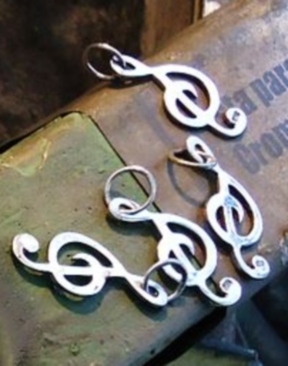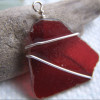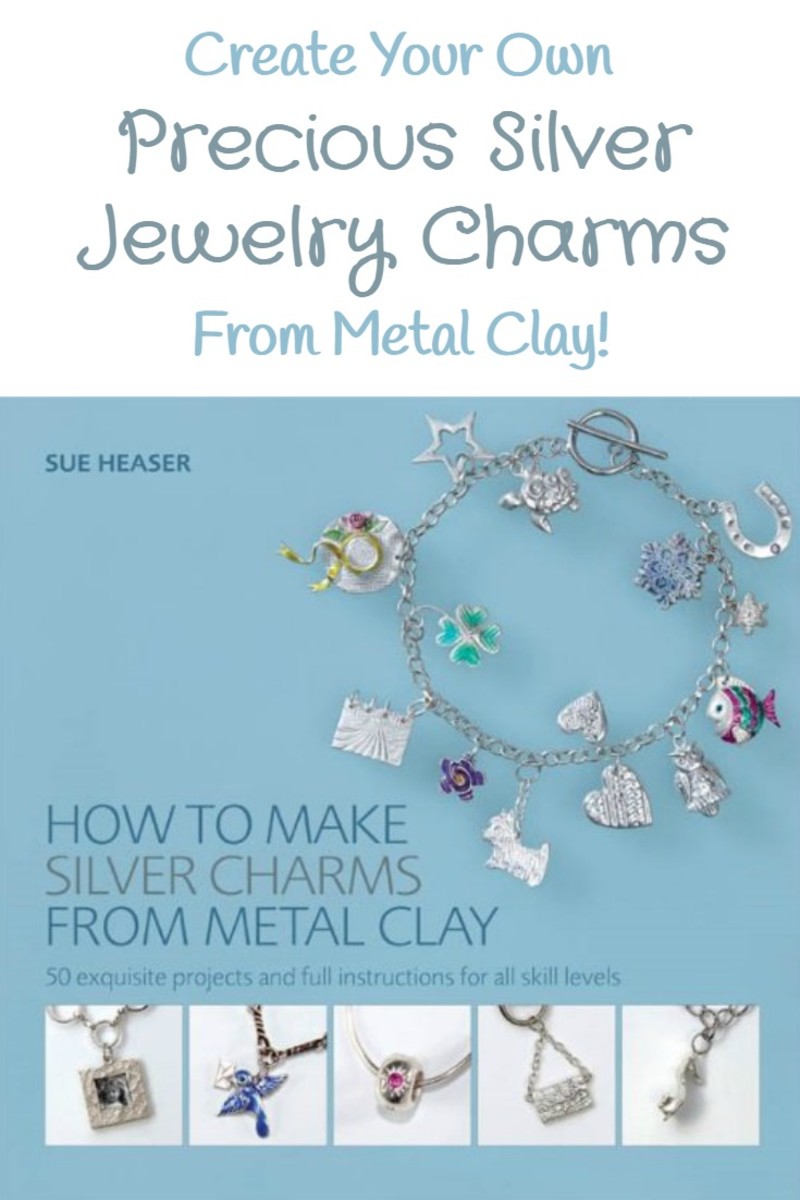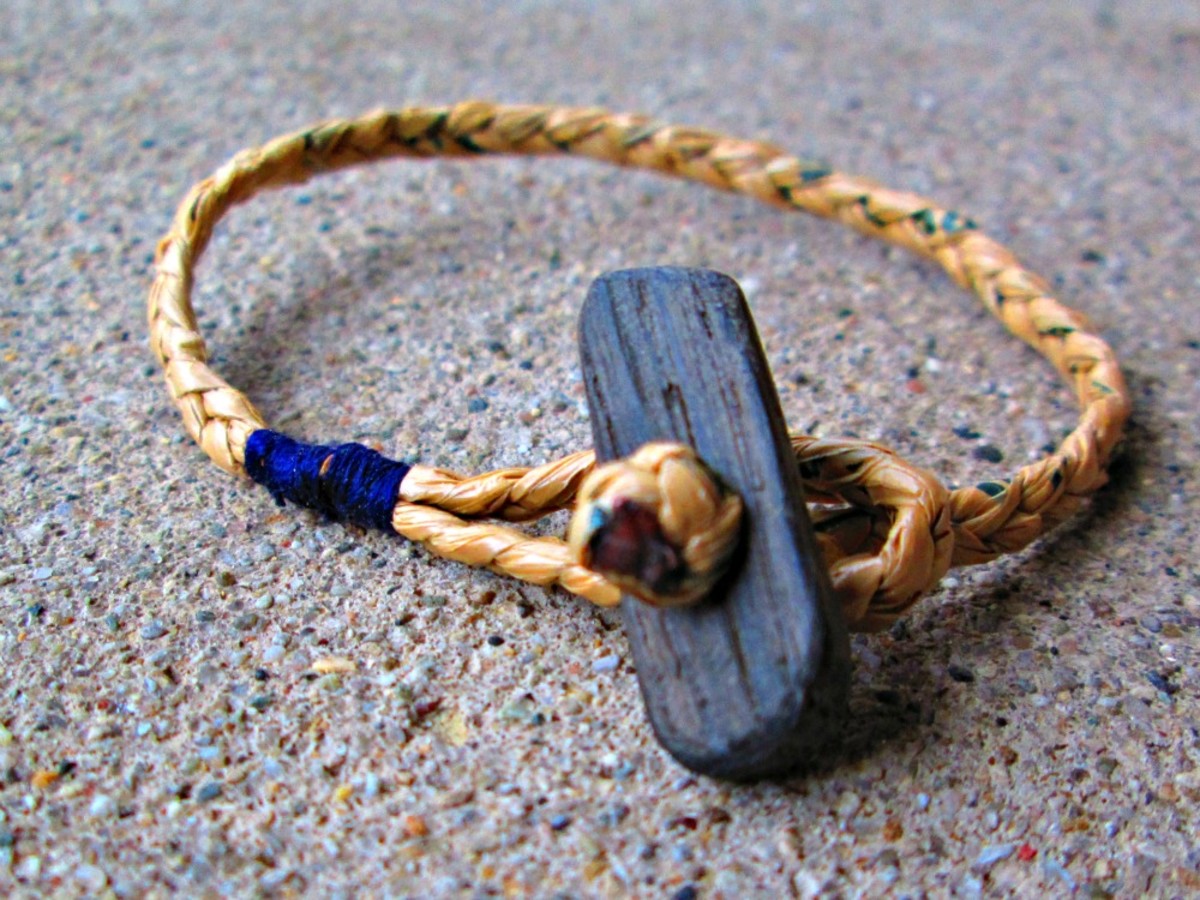Cleaning and Polishing Jewellery
If you make jewellery using sterling silver, copper, bronze, or other metals, or have some old pieces in your collection, you will want to make sure it sparkles. If you are making handmade sterling silver or bronze/copper jewellery you will know that once it's made it needs polishing to a high shine to get that "professional" finish that will attract buyers - especially if you are displaying your jewellery in craft shows, or visiting galleries to persuade them to buy from you.
Once polished, jewellery can look 10x more attractive and inviting - and it's an important part of the process of making handmade jewellery that can be overlooked. Many times I have been underwhelmed by items I have made, to suddenly find they are magnificent once I've cleaned and polished them up.
You might use a sander as you are making your jewellery too - for example to sand off sharp edges, or to smooth out the shape.
Why Polishing Jewellery is Essential
If you are making jewellery for resale, the only way to get a fully professional finish and be able to command top prices for your work, to make more sales and more profit is to polish it to a high level of shine. Customers will be drawn towards your pieces, above those of competitors, as they become eye-catching.
Polishing your finished piece can be overlooked as it can be hard work and you might wonder "what's the point?" - well, the point is your customers are looking for something eye-catching, something gorgeous - and polishing your finished pieces gives it that extra "pop" that converts lookers into buyers.

Polishing Jewellery: Which Grit Size to Use
It is essential when polishing jewellery using any sanding paper, or sanding brushes and sanding blocks that you understand grit size.
Whatever method you choose, every product is based on the effects of abrasion on the metal you are working with. If you pick up a piece of sandpaper to sand down a wall in your house you'll be aware that you are using a sheet of paper with hard/sharp grit stuck to it. When you are sanding down your jewellery to make it cleaner, to smooth off the edges, or to produce a high shine, it is exactly the same process - it is just that the grit is much, much finer.
Do not be tempted to use sandpaper intended for sanding walls as it will be too rough and will scratch your metal, whether that is silver or copper.
Grit sizes are measured in "parts per square inch" and this is denoted by a number. The larger the number, the finer the grit. You need to start with a low number and end on a high number, start (say) with a grit size of 600 and finish on a 1200 or 2000.
If you are sawing sheets of sterling silver or copper, you will want a very coarse grit to get rid of the sharp edges - possibly just half a dozen or so carefully targetted swipes. Then move onto the finer papers.
Which grit is best to use is something you will begin to work out once you've polished a few pieces. Why not practice with a few offcuts.
Polishing Metal and Plastic/Resin
If you are working with mixed media, you should keep a separate set for each. Keep your files and sandpapers separate. Some old metal filings in your sandpaper, that is then used for filing plastic or resin, could ruin your carefully made piece.
Using a Rock Tumbler for Polishing Jewellery
Probably the easiest method for cleaning and polishing jewellery is to use a tumbler. These are standard rock tumblers - you might already have one from childhood!
A tumbler is a simple piece of kit where you put your finished pieces of jewellery into a drum, with some stainless steel shot, water and a teaspoon of washing up liquid, turn the machine on and it simply vibrates or turns as you get on with something else. Come back half an hour later and your jewellery pieces shine like the sun!
The added advantage of using a tumbler is that you can use it to make your own gemstones by buying small bags of rocks and tumbling them. These gemstones can be used in your own jewellery designs, or you can even resell them to pay for your tumbler!

Use a Dremel Drill for Polishing
A Dremel is the "must have" piece of equipment for anybody who is making their own jewellery. The Dremel is a multi-purpose drill, with a vast array of handy attachments. Most jewellery makers will use their dremel to drill holes into metal, to attach a jump ring, but you can also use a polishing attachment and use that to polish up finished pieces easily.
When you use a Dremel Polishing Head, you will also need to buy some polish for it. The Dremel will use the polishing heads to provide the abrasive action - and the polish to bring up a full shine. You can compare this to dusting - you'd use a duster to remove the dust and a tin of polish to bring your furniture up to a high shine.
If you have a Dremel already, all you need to buy is some of the polishing tools and simply fit them.
Using a Brass Brush
Some people will use a brass brush to polish jewellery - this is quite popular with people who are using precious metal clays (PMC) to make pieces. When you fire sterling silver PMC in a kiln, or by torch, when you've finished it is completely white. You will see the same effect when you remove sterling silver from a pickle solution. The white is simply a thin coating that needs to be removed and, if you just have a couple of pieces that are finished, you can simply use a brass brush and a solution of water and washing up liquid, or you can use it dry.
The brass brush you need is a jewellery quality brass brush - if you just brush your piece with a brass brush you will have a nice satin finish. If you want to have a high gloss finish then you will need to use other methods to bring the shine up.
One brush will probably last you a lifetime.

Sanding Paper and Sanding Sticks
Using sanding paper and sanding sticks takes quite a lot of time, but the end results can be very satisfying.
Using "wet or dry" sanding paper gives you the option of using it dry or with soapy water, giving a better/quicker/easier result.
Tip: Only ever sand in ONE direction. Pick your most comfortable and natural direction and sand in one direction only to build up a good shine.
Tip: Each time you change grit size, change the direction you are polishing so that you can see where you've been.
600 grit: Start by using a coarse 600 grit paper to get the most obvious marks off. Sand in one direction.
800 grit: Move onto this finer sandpaper once the rough edges have been removed - sand in a different direction. Keep using it until the marks left by the 600 grit have been removed.
1200-2000 grit: This superfine sandpaper is the one to finish with, bringing your piece up to a high shine. At this stage you should be polishing in small circles
Cut your sanding sheets into smaller pieces to use - I write the grit size on the back of each small piece as you can't always tell by eye.
Sanding Sticks
These are simply sanding paper, glued onto sticks or blocks of wood, to halp you grip the sanding paper on some awkward shaped pieces. Most jewellers will have a selection of sanding paper and sanding sticks. I write the grit size on the wooden part of the sanding sticks then line them up in size order in front of me so I can grab the one I want quickest.
Garryflex Sanding Blocks
Garryflex produce a range of handy sanding blocks which are much easier to use than regular sanding paper.
The Garryflex range feel a little rubbery, like an eraser, but have grit embedded in them. You can use them as a whole block, but the best way to use them is to cut them into smaller pieces, so you can reach smaller areas to really remove all the dirt and scratches.
There are three grades of Garryflex sanding blocks to use for cleaning jewellery metals:
- 60 grit: use this size for a pre-polish finish or to create a satin finish.
- 120 grit
- 240 grit
Work through each of the three grades in turn, the same as you would do with sandpaper to begin the polishing process.
These sanding blocks can also be used on plastics, ceramics and paintwork.
To assist with polishing and cleaning your metals, these Garryflex blocks can be used with water, washing up liquid or white spirit.
Jewellery Courses
If you ever attend a jewellery course, you'll get to see and use some of these methods, depending on the type/duration of the course and what item you are making.
When I attended precious metal clay (PMC) silver courses, I used a brass brush and soapy water on one occasion when time was short. When I had 30 minutes or so left I used a tumbler - this was easier and produced a MUCH better result as it got into all the tiny textured pattern and made the piece shine magnificently without me putting any elbow grease into it!
On silversmithing courses, using sandpaper and sanding sticks will always occur. Most of the attendees I've been with have had a Dremel drill at home and would take their work home to polish.
- List of Jewellery Making Courses in England
A list of jewellery making courses and many silversmithing courses I've found that teach you to make your own silver and copper jewellery from scratch. These jewellery making courses are daytime courses of at least one day's duration. - Silver Metal Clay Courses
Learn how to take a cast of fingerprints and turn them into silver jewellery - there are courses throughout England. It's easy, it's fun - and makes for a great home-based business! Find out where.. - Jewellery Studios to Rent
Did you know you can rent a whole jewellery studio, by the hour or the day, at very affordable rates? If you are starting to learn jewellery making, you might put off your start date as you believe you need a whole lot of cash to set up your own stud




